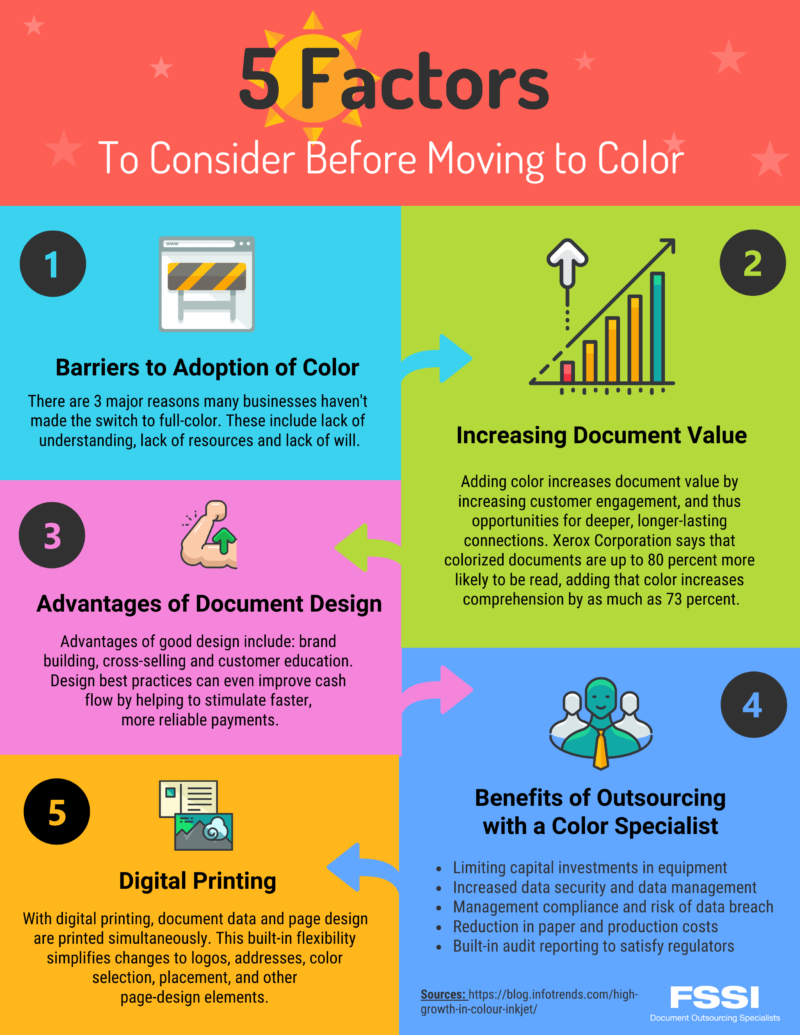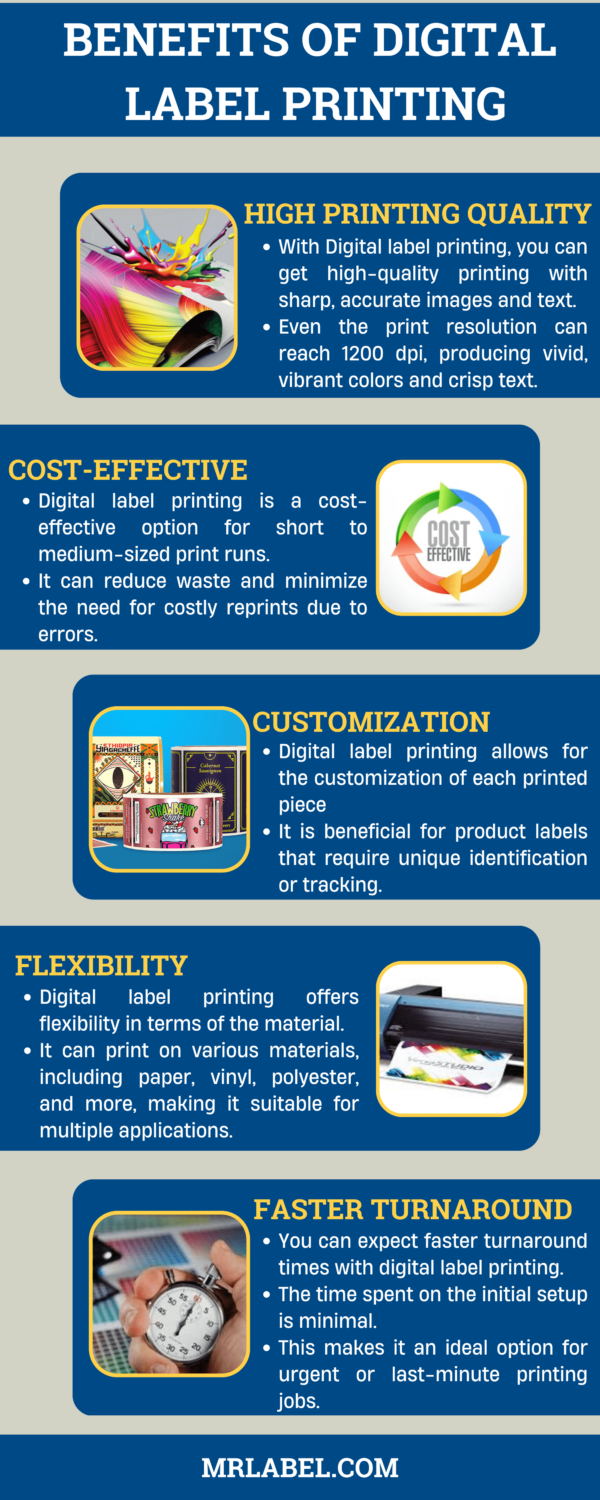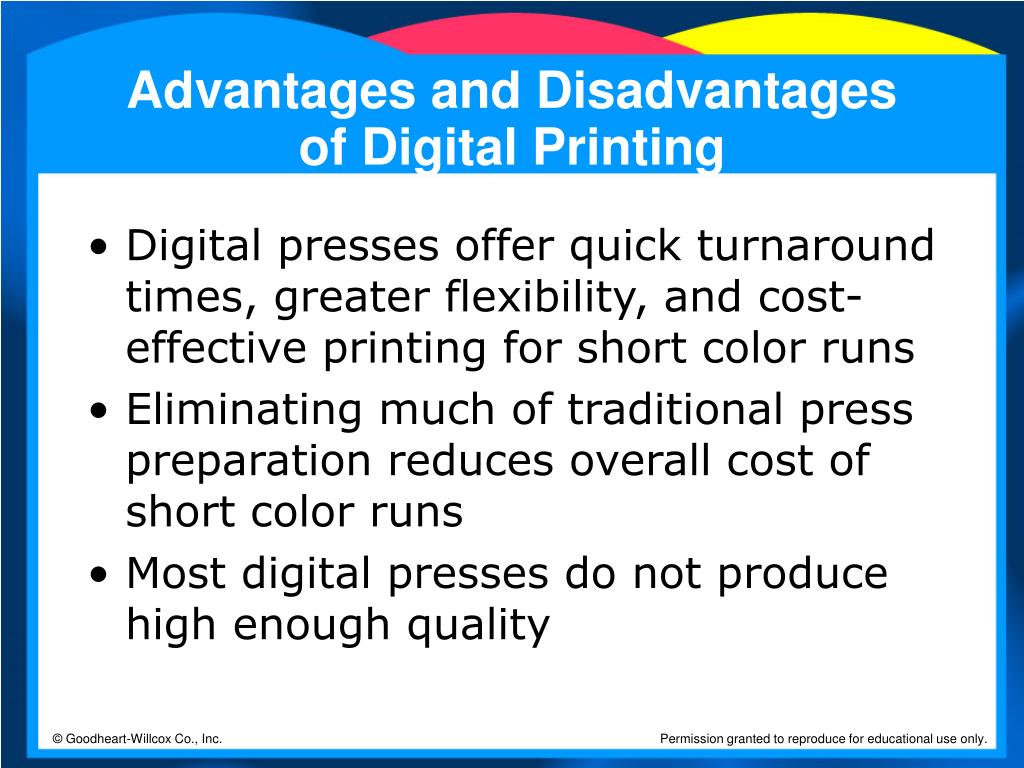5 Easy Facts About Digital Printing Shown
5 Easy Facts About Digital Printing Shown
Blog Article
See This Report on Digital Printing
Table of ContentsAll About Digital Printing8 Easy Facts About Digital Printing DescribedGet This Report on Digital PrintingDigital Printing Can Be Fun For EveryoneThings about Digital PrintingThe 3-Minute Rule for Digital Printing
Variable data printing, such as straight mail with personalized codes and addresses, is ideally matched for digital printing. Digital quick printing just needs 4 steps of design, evaluation, printing and binding to obtain every little thing done. Digital quick printing has an unparalleled advantage: print on demand.According to PMMI, digital printing enables brands and producers to react rapidly to client needs while boosting the supply chain, decreasing warehousing expense and waste, and taking pleasure in faster time to market. That all noises wonderful, yet just how does this modern technology do all that? The major differentiator of these technologies is that there are no set-up fees and no plates with digital printing.
The Best Guide To Digital Printing
According to Wikipedia, the best distinction in between digital printing and standard techniques such as lithography, flexography, gravure, or letterpress - Digital Printing is that there is no requirement to change printing plates in digital printing, whereas in these analog printing methods the plates are repeatedly replaced. This leads to quicker turn-around time and lowers cost when using electronic printing.
Fast production means obtaining your product to market much faster. It also implies it's less complicated and faster to make modifications later on, when you transform a dish, include a SKU, or produce seasonal product packaging. Digital printing is very versatile, so it's simple to make modifications to the package design quickly. It all goes back to the plates.
With standard printing methods, short-run printing is simply not possible. Because an excellent style can make or break your item, electronic printing consistently produces top quality, clear and vibrant graphics each time.
Digital printing is the process of printing digital-based pictures straight onto a selection of media substratums. There is no demand for a printing plate, unlike with offset printing. Digital files such as PDFs or desktop computer publishing files can be sent straight to the electronic printing press to print theoretically, photo paper, canvas, fabric, synthetics, cardstock and other substratums.
All about Digital Printing
According to PMMI, electronic printing allows brand names and suppliers to react promptly to consumer needs while boosting the supply chain, minimizing warehousing expense and waste, and appreciating faster time to market. That all audios great, but just how does this modern technology do all that? The major differentiator of these technologies is that there are no set up costs and no plates with electronic printing.
According to Wikipedia, the biggest difference in between electronic printing and conventional techniques such as lithography, flexography, gravure, or letterpress is that there is no demand to change printing plates in electronic printing, whereas in these analog printing approaches the plates are consistently changed. This results in quicker turn-around time and reduces expense when using digital printing.

A Biased View of Digital Printing
A lot more stock can suggest more waste in the future. With conventional printing methods, short-run printing is simply not possible. Since a terrific design can make or damage your item, digital printing consistently produces high-grade, clear and vivid graphics each time. Digital printing on adaptable bags adds the intense, lively, and accurate graphics that virtually beckon customers to connect and touch them.

According to PMMI, electronic printing enables brand names and makers to react swiftly to client demands while enhancing the supply chain, reducing warehousing price and waste, and appreciating faster time to market. That all audios excellent, but how does this innovation do all that? The significant differentiator of these technologies is that there are no set-up charges and no plates with digital printing.
Rumored Buzz on Digital Printing
According to Wikipedia, the best distinction in between electronic printing and conventional methods such as lithography, flexography, gravure, or letterpress is that there is no requirement to replace printing plates in digital printing, whereas in these analog printing methods home plates are continuously replaced. This results in quicker turnaround time and reduces expense when utilizing electronic printing.
Digital printing is highly adaptable, so it's easy to make changes to the plan design promptly. It all goes back to the plates.

An Unbiased View of Digital Printing
Digital printing is the process of printing digital-based photos straight onto a selection of media substrates. There is no need for a printing plate, unlike with offset printing. Digital data such as PDFs or desktop publishing files can be sent out directly to the electronic printing press to publish on paper, anchor photo paper, canvas, material, synthetics, cardstock and various other substrates.
Report this page